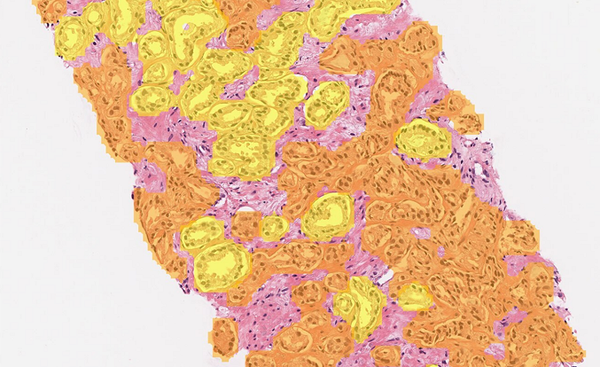DeepBio said that Stanford University’s research team has released study results on DeepDx-Prostate, the company’s deep learning-based software that diagnoses prostate cancer, at the annual meeting of the American Urological Association (AUA).

The researchers at Stanford University School of Medicine conducted the study to confirm the performance of DeepDx-Prostate in the presence or absence of prostate cancer and the Gleason grading system, the most powerful prognostic predictor of prostate cancer.
The research team separated 150 samples collected through prostatectomy into 500 tiles and compared the analysis of DeepDx-Prostate and two urologists according to the tumor size within each tile, Gleason score, and the ratio of Gleason patterns 4 and 5.
Although DeepDx-Prostate is software trained with prostate needle biopsies tissue images, it showed a high overall agreement with the reference standard generated by the two urologists, the company said. In addition, DeepDx-Prostate demonstrated an “expert-level” performance when classifying benign and negative prostate cancers and identifying whether the tumor accompanies low-risk or high-risk.
The software was also used in a study to measure the agreement between preoperative MRI and histopathology in detecting cancer in prostatectomy samples.
The researchers used samples from 30 men who underwent prostatectomy in the study and read the sample images via MRI using the latest three-dimensional (3D) technology.
They used DeepDx-Prostate to detect tumors and grade malignancy. While DeepDx-Prostate identified all cancer regions and graded malignancy regardless of tumor size, MRI only verified 66 percent of all tumors, missing 37 percent of clinically significant tumors.
The company’s software significantly shortened the time needed for the annotation and classification of the malignancy. In contrast, urologists required an average of 45 minutes to check the presence of cancer in the sample images.
“The American Urology Association’s annual meeting, which has the largest number of members in the world, was an opportunity for us to prove the performance of DeepDx-Prostate again by drawing international attention,” Deep Bio CEO Kim Sun-woo said.
Because AI-based cancer diagnosis assistance software is drawing interest as a means to solve manpower shortage and inconsistency in diagnosis among pathologists, DeepBio will continue to conduct global studies to enhance the performance of DeepDx-Prostate and expand the usage in the field.”

